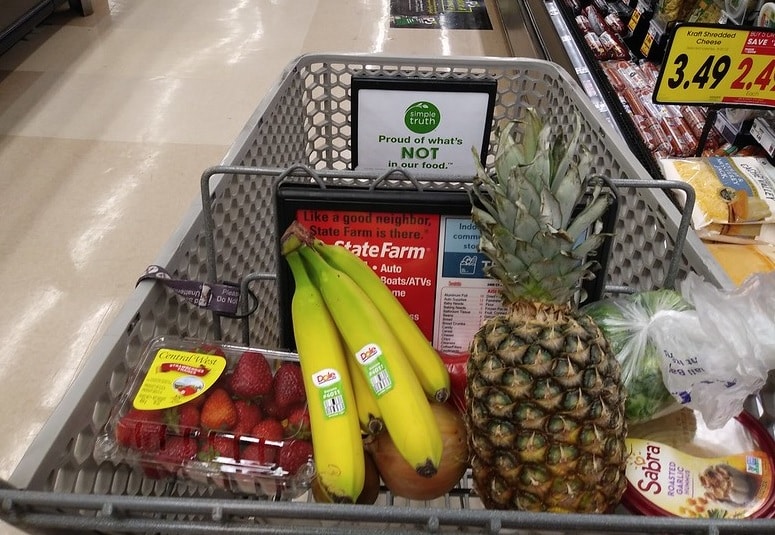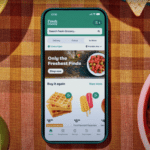Digital coupons are supposed to be convenient. But have you ever found yourself standing in a grocery aisle, fumbling with your phone, scrolling through hundreds of offers in your store’s digital coupon gallery, trying to find out whether there are any coupons available for the products you want to purchase?
Some stores let you scan an item to find out if there’s a digital coupon available. But one inventor is proposing an even easier way.
In a newly-published patent application, a Toronto-based company called Medixin is proposing a system that will recognize products you put into your shopping cart, and offer you coupons based on what you’ve selected. Instead of having to scan bar codes one by one, the submission for a “Computer System and Method For Offering Coupons” describes an app that would use image recognition to scan all of your items all at once.
If you had such an app on your phone, all you’d have to do is take a photo of the inside of your shopping cart before checking out, the app would identify every item and match them with available digital coupons for you to clip, so you don’t have to go searching for them.
“There is a need for an improved system and method for offering coupons to customers that overcomes at least some of the disadvantages of existing systems and methods,” the patent application reads. “Existing approaches to offering coupons to targeted customers… can be ineffective and inefficient,” it goes on. “Customers often have to search for, be aware of, and control coupons before going shopping, which can be time-consuming and lead to missed opportunities for redeeming coupons.”
So the system it describes would make sure you never miss out on any coupons, with a simple click of your camera.
The documentation doesn’t specify whether the system would need to be embedded in a retailer’s app, or exist as part of a separate third-party app. If the latter, the inventors propose allowing the app to access location data, to determine where you are – that way “a store identity” can be determined, so Kroger digital coupons won’t be clipped if you’re shopping in Target, and vice versa.
There are other ways you could use this system to save as well. The application suggests you could also take a photo of your receipt after you shop, showing what you’ve purchased. Then the app will learn your shopping habits, and pre-emptively offer you coupons in the future based on your preferences – or what retailers and manufacturers might want to encourage you to buy. “This may include, for example, directing a user to a particular product or store by offering a particular coupon for that product or store,” the documentation reads.
In theory, you could also use the app to scan for coupons before you place any items into your shopping cart at all. While the patent application doesn’t describe precisely this scenario, if you can take a photo of the inside of your shopping cart to look for matching coupons, you might also be able to take a photo of a store shelf to see which items on said shelf have coupons available. Want to see what cereal brand has a current coupon? Just take a photo of the entire cereal aisle, and see what offers the app finds for you to help you decide which brand to buy.
So, in some situations, the system could prove to be as beneficial to brands and retailers as it is to shoppers. Scan a shelf full of groceries, and the product that has a coupon available could be the one that ends up in your shopping cart – that’s a win for that brand. Allow the app to learn your purchase history, and brands and retailers can present you with personalized offers to steer you to buy their product or shop in their store.
In other cases, it’s unclear what’s in it for those that are offering the coupons. If you already have your items in your cart and you’re heading to the checkout, a scan with your app will grant you a lot of digital coupon discounts for products you were going to buy anyway. And brands want to incentivize you to buy their products, not give away discounts for something you already planned to buy at full price.
But the inventors of this system say it’s all about making it easy for shoppers. “Finding and/or keeping track of coupons using current methods can require significant expenditure of time and energy on the part of customers,” the patent documentation reads. “Many customers lead busy lives and do not want or need to dedicate further cognitive capacity to manage and use coupon offerings using existing approaches.”
So if you ever feel that you lack the “cognitive capacity” to clip your own coupons, help may be on the way. Digital coupons are meant to be easy. But if the inventors of this system have their way, clipping coupons could become easier than ever.
Image source: sipes23














